- DGK Viper 8.125 Deck Review: An Overall Good Board - April 20, 2022
- Best Skateboard Bearings Guide: All You Need Consider - January 27, 2022
- Most Famous Old School Skateboarders - January 27, 2022
There are two schools of thought within the world of skateboarding. Many skaters and pros believe that skating is 20% and 80% confidence. Whereas the other batch of skaters believe that raw talent and dedication are much more important.
However, few would argue against the idea that you need a hearty dose of each to succeed within the world of skateboarding, and often, it depends on what you are trying to do which will determine if it’s an act of skill or blind confidence.
For example, there isn’t one person on the planet that will be able to pick up a board and do a lazer flip, a nightmare flip or a caballerial kickflip without having a great understanding of how the board under their feet operates.
However, there are some things that just about any average joe can perform on a board if they have the bottle to do it. One such trick is dropping in.
Dropping in requires bravery above all else, as you stand at the top of the ramp, board hanging over the coping and pray that you’ll make it to the bottom in one piece. However, despite this trick being about bravery, there is also technique and tips that can be applied to help you.
So with that in mind, we have put a guide together to help you drop in, understand transition skating and even learn some new variations of this trick if you are feeling brave. Here is our essential handbook on how to drop in.
What is Dropping in?
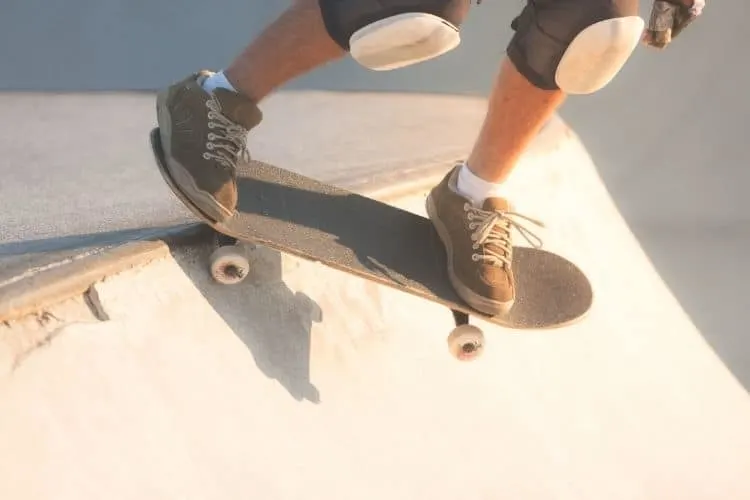
While many associate skateboarding tricks with the board spinning, flipping, rotating or the skater doing a stall, grind or grab of some kind, dropping in is a trick in its own right, but it’s also the foundation of transition skating.
Dropping in in basic terms is when the skater is perched at the top of a ramp with their tail balanced on the coping and they lean forward, go down the ramp on their wheels, generating speed as they go, and then ride away to safety.
This is an action that is required for just about any transition run as you have limited spaces to generate speed and dropping in from ramps allows you to get this speed fast and move onto your next trick.
To perform this action, the skater must fully commit to the act of dropping in, as hesitation can lead to some pretty gnarly slams. This is why we say that bravery is nine-tenths of this trick.
What Tricks Do You Need To Know Before Dropping in?
Due to the fact that this trick is more or less the first thing you will do on a ramp, there isn’t really any essential things you need to know before you go for it.
This is why just about anyone with enough courage and some guidance can do this one. However, there are several core skills that you can practice if you want to cut down on the bails you incur on the way to a successful drop-in.
The first thing we would suggest is that you get comfortable on the board. Meaning that you know how to stand on the board, know your preferred stance, know how to stop, turn and pivot on the board.
This will allow you to stay on the board with more success, plus, if things happen to go wrong, this can help you get out of perilous situations unscathed.
Then secondly, we would suggest that you learn how to fall. We know this sounds a little bit silly but there is a right and wrong way to fall.
If you lead with your wrists, you could easily break your arm, don’t brace yourself right and you could take a bump to the head. So be sure to take the time to learn the best way to fall if you need to.
Then lastly, there are a few movements that we would encourage you to try before you drop in on a ramp but as we said, these are not strictly necessary. Here is a list of optional skills to learn before you drop in:
- Kickturns
- Kickturns on ramps
- Drop-in on a bank
- Pumping
How to Drop in: A Guide
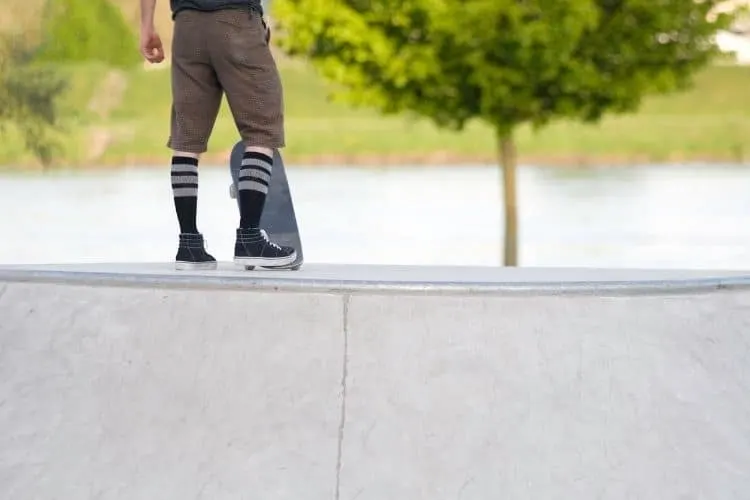
Ok, so let’s get into the meat of this guide. Let’s learn how to drop in. The first thing that you’ll need to do is find a suitable ramp to learn on. We would suggest something that isn’t too intimidating.
If there is a mini-ramp available or a quarter pipe that is about 4-5 feet tall, we would urge you to go for this rather than aiming to drop into a large concrete bowl on your first attempt. Also, we would suggest you learn on wood or Skatelite ramps as these materials are much more forgiving if things go wrong.
The second step is to clamber up to the top of the ramp and place the tail of your board on the metal coping of the ramp. You’ll want to place it so that all four wheels are hanging off the edge of the ramp. Then place your back foot on the tail of the board to keep it in place.
Next, you need to get yourself in position. So keep your back foot on the tail and then turn your body into the natural skating position with your front foot on the truck bolts closest to the nose of the board. However, for now, don’t place any weight on the board.
Now, you need to get yourself ready to drop in. So square up your shoulders to avoid any change of direction on the way down. Focus your gaze on the ramp below and when you feel ready, push your front foot down hard, and lean forward.
This will allow you to keep in contact with the ramp the whole way down and will make sure that the nose of the board stays down.
Then lastly, don’t rest on your laurels. Once you have done this successfully once, we would suggest that you do this several times until this feels natural.
Common Mistakes When Dropping In
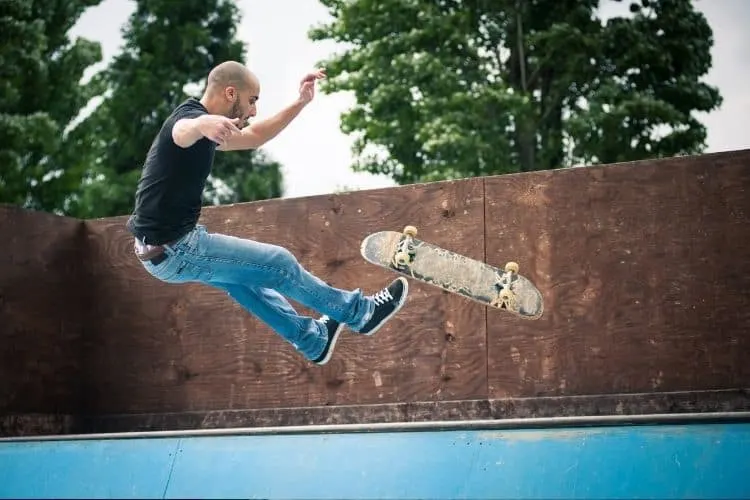
If you have got through the steps of this guide and all you have is cuts and bruises to show for your efforts, then there is a clear error that we need to iron out. Thankfully, these issues with technique tend to be pretty easy to spot and can be corrected if you spot them. Here is a quick list below:
Commitment/Leaning Back
The biggest mistake that you can make when dropping in is a lack of commitment. It can seem very scary and dangerous to lean all your weight forward when going down the ramp. However, if you lean back, chances are you will hurt yourself much more often.
Leaning back causes the board to get ahead of you and causes you to lose control. The best-case scenario is that you slam the tail down on the ground and skid to a halt and the worst case is that the board goes down the ramp without you and you slam hard.
So the only way to combat this is to face your fears, slam your nose down, lean forward and ride off into the sunset.
Opening up Your Body
The tip above tends to be the most common issue but occasionally, you will see skaters opening up their bodies when dropping in.
Being loose when descending the ramp will cause instability and often lead to the board taking an unwanted path off to the left or right, which usually leads to a slam. So keep those shoulders square and you should have no problems.
What Equipment Do I Need to Drop In?
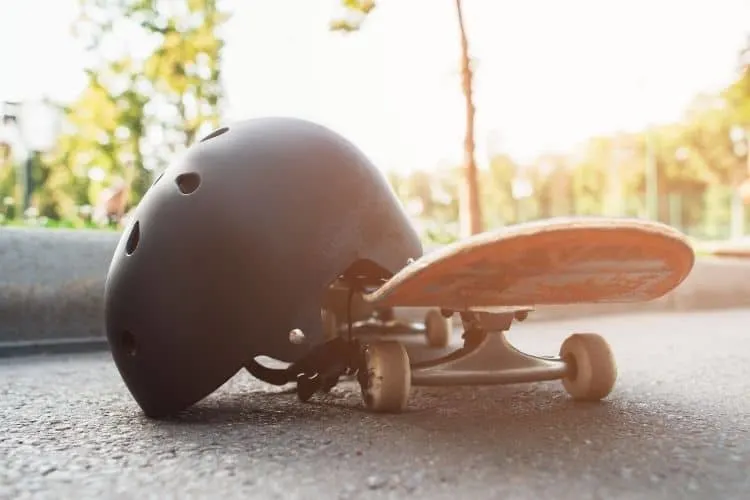
Aside from a skateboard to drop in on, you don’t necessarily need any equipment to drop in. However, that is not to say that equipment isn’t beneficial, especially when learning these intimidating moves on large ramps.
So what we would suggest to beginner skaters is that they wear a helmet at the very least, as the possibility of leaning back on your first few tries is rather high. Then if you want to take extra precautions, we would say that elbow pads, knee pads and wrist guards wouldn’t go amiss either.
We would also suggest that you get yourself a skate tool to tighten your trucks for this one. You might be a rather confident street skater but transition and vert are different beasts altogether, so we would say ride them a little tighter than usual for added stability and less likelihood of the board shooting out from under you or speed wobbling.
Are There Different Ways To Drop In?
While there is only one conventional way to drop into a ramp, there are several more stylish and complex ways to navigate from ramp to ramp and drop into ramps. So allow us to talk you through each of those:
Acid Drops
Acid Drops are essentially much more daring drops. An acid drop by definition is when you drop into a ramp or bank from a height. So if you were to leap upward and then drop in without the use of the coping, you have acid dropped.
Or equally, if you jump off a building and into a bowl, you have done an acid drop. This is an advanced move and one that should only be attempted if you are an accomplished transition/vert skater.
Spine Transfers
Then secondly, you have spine transfers. These can be done in two ways. One is where you approach a ramp at speed, stall on the top of the ramp and then descend down the other ramp that is perpendicular to the ramp you first ascended.
This is more of a lip trick than a means of dropping in. However, the other technique is very much a means of dropping in.
This is when you approach the first ramp with so much speed that you leap from one ramp and drop in directly into the next. This takes a lot of skill, speed and bravery to pull off but if you do, expect an uproar from your fellow skaters.
What is The Difference Between Transition and Vert Skating?
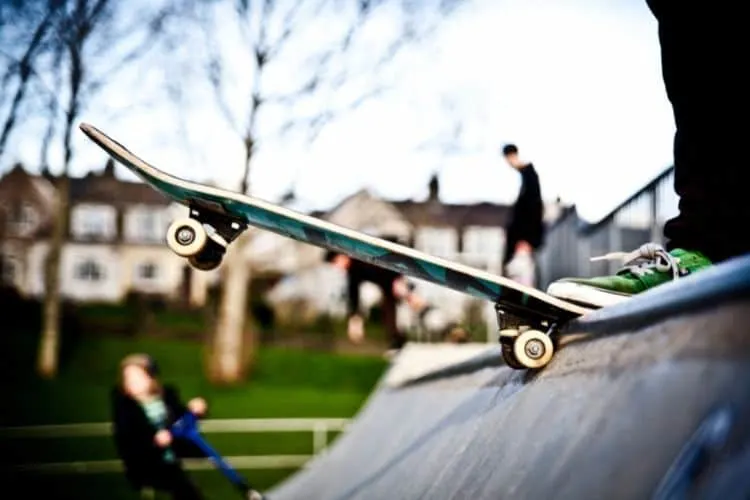
Transition skating by definition is skating both vertical and horizontal obstacles. So picture it like this, a transition course will have quarter pipes and mini-ramps, but equally, the course will also have hubbas, rails, ledges and kickers to skate.
Transition is a discipline of skating that requires fast feet, skaters that are quick to adapt and a wider variety of trick categories that range from grinds, lip tricks, stalls, flip tricks, grabs and much more.
Vert is a much more straightforward but by no means easier discipline. To best describe vert skating you would picture a mini-ramp and then multiply the scale by ten or twenty depending on the ramp. Then you have the setting for vert skating.
There is still scope for flip tricks and grinds within vert skating. However, the big point runs tend to be dominated by skaters that utilise the huge air time these ramps offer to do tricks that simply aren’t physically possible on park ramps.
What Other Transition Tricks Should I Learn After I Drop in?
If you managed to drop in thanks to our guide. First of all, congratulations. Then secondly, we bet you want to build on that by nailing some new, more complex transition tricks.
However, you may be at a loss as to the tricks that you should be focusing on after successfully dropping in. Well, here is a list of the most popular and achievable transition tricks to attempt after dropping in:
- Rock to Fakie
- Rock and Roll
- Bertslide
- Nose stall
- Blunt to fakie
- 50-50/Axel Stall
What is the Biggest Drop In Ever?
As of 2006 the record for the largest freefall/acid drop/drop-in was 28ft and was carried out by none other than the Evil Knievel of skateboarding, Danny Way.
This drop was recorded in Las Vegas, Nevada where Danny Way dropped from the Fender Stratocaster outside the Hard Rock Casino. This drop would improve on the past record by 16 feet.
However, this record has been bettered by a Norweigian skater by the name of Adil Dyani. This skater was highly motivated to beat Danny’s record. He would set up a specialist ramp inside a large military base in Norway in 2013 and went on to drop from a height of 30.83ft.
Drop In, Stay a While
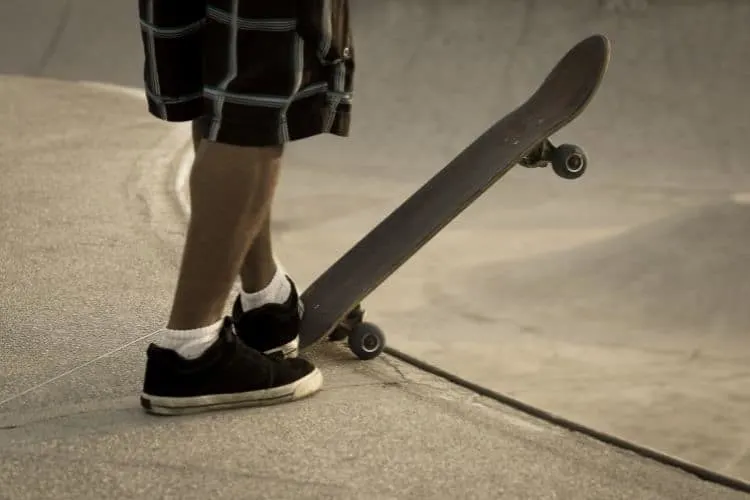
As you can see from the information above, being able to drop in is a vital skill in transition and vert skating. This can be one of the most terrifying experiences within amateur skateboarding but if you can pull it off, it’s also one of the most rewarding.
We hope that this guide helped you get down the ramp in one piece and that you learned a thing or two about transition skating.
FAQs Section
If you have reached the end of this article and you still don’t have the answers that you need, then don’t panic. We have an FAQ section that will help clear up any pressing questions that are on your mind. Check it out below:
Answer: If you have been blessed enough to build your own mini-ramp or half pipe. Or perhaps visit a modern public skate park, you may be aware of what Skatelite is.
This is a specialist material that is used to make ramps, there are several companies like Ramp Armour that offer very similar products but Skatelite is an internationally recognized outlet. This material mimics the finest indoor, wooden skate ramps which are used at the highest level of the sport.
However, has the durability to be placed outside and brave all types of weather with little to no degradation. So if you plan to make a ramp, SkateLite is the ideal option.
As you can imagine, the world of skateboarding has been no stranger to hard slams, broken bones and trips to the emergency room.
However, if we had to choose just one slam as one of the most dangerous, shocking and truly death-defying, we would have to choose Jake Brown’s slam on the mega ramp at X-Games 13.
Jake Brown had just executed one of the cleanest 720 rotations ever seen at the competition and approached the huge mega ramp. All he had to do was make it back down in one piece and he would have put together a respectable run.
However, as he rode up the ramp, his board fishtailed, he ended up about 45 feet up in the air with only one way down. He crashed to the floor feet first, the impact seen both of his shoes shoot off his feet in opposite directions.
However, despite this Brown not only survived, but he also walked away from the ramp like a true champ. The skater would earn a silver medal for his efforts in previous runs that year and in terms of injuries, Jake suffered a fractured wrist, fractured vertebrae, bruised liver, bruised lung, ruptured spleen and concussion.
When it comes to skating parks, the best wheels for the job are Hard wheels somewhere between 52mm and 54mm. These are much more durable, less likely to wheel bite and they roll fast on smooth surfaces, making gaining speed an easy task.
Soft wheels are great for cruising and general transport as they will move fast over just about any surface. However, they don’t do the same specialist job that hard wheels do in a park setting.
So that is our essential guide on how to drop in when skateboarding. What do you make of this guide? Was this helpful and informative for you? What other skating guides would you like to see from us in the near future? Let us know in the comments section below and as always, thank you for reading Skate Culture Insider
Looking for more? Check out:

